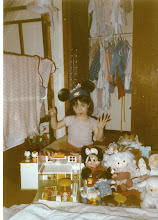Last weekend I had the pleasure of seeing Tracey Emin read excerpts from her novel Strangeland - a bittersweet memoir of her seaside teenage sexual exploits now read by British public school children –at Performa’s Lust Weekend. Despite the juicey nature of all the secrets divulged, the message I took away was, “Everyone should write poetry.” Likewise, in Emin’s current exhibition at Lehmann Maupin’s lower east side gallery, (Only God Knows I’m Good) it is the words scrawled beside the sexually-charged imagery of her monoprints, neon and needleworks which make the artist and the work so redemptive.
A scared child in the fetal position lies beside the words The Past is Coming Fast. Filling in the white space between Emin’s signature imagery appear broken thoughts like Always Dancing…Alone Inside Your Head Hurting Not Just Yourself or Some Crazy Fucked up Dog Like Hell…That’s How it Feels to Love Without Love or Hope You are Pregnant… Pregnant with More Guilt than you Are Able to Live With. A pair of gruesome legs with hoof-like feet stand open, exhausted, injured, immobilized, and crowned by a blossoming ring of pubic hair. Although the forms are familiar to those acquainted with her work, they have hardly calcified. In her new animation, a pair of hands convulse furiously at a vagina like a player piano, in another the same legs rise into a stately fairytale gown. In Only God Knows I’m Good Emin juxtaposes her horizontal nudes with the likeness an upright, gowned, Jane Eyre or princess-like figure, her face blackened out and the “salty line” of her skirt almost in motion. In Nothing Touches, the gowned figure appears to be twirling, suggestive of a whirling dervish, the Sufi emblem of female power and spiritual ecstasy (or perhaps hysteria; emotional and psychic distress having been long considered a sign of both creativity and sexual abandon in females (1).
There’s a certain pleasure, particularly for women, in reliving the sense of elation in elegy; in confession, delirium, and overcoming. Emin’s distinct union of words and images continue the tradition of personal narrative in feminist art; what critic Lucy Lippard considers, “collage as dialectic,” and as “interruption and the healing instinct” (2). Emin erects both a horizontal monument and a message: Sex is pain. Sex is torture. Love also, is terribly painful. Only transcendence is perfect.
Shamelessly brazen in her appeals to popular culture (Ms. Emin is current poet in residence at GQ Magazine) and publicly transparent concerning her humble origins, she employs her own [cunt] vernacular (3), a strategy long associated with feminist aims of reconstructing a history of art largely dominated by Modernist (4) dependence on and antagonism toward the bourgeois establishment. Tracey Emin is the gum chewing public, and her body is a transgressive figure within the conventions of the art world (5). It is her unique brand of disco seduction that has the “culture vultures” of New York City, London, and Paris swooping in to ogle the artist’s iconoclastic, post-coital – body? lump? corpse? “Everyone should write poetry,” she reminds us, “it doesn’t have to be good.”
Her new animation, Emin insists, is about masturbation. Using a climax metaphor in the spirit of French theorist Helene Cixous, she explains that, unlike male artists who reach a career peak, “Women keep cuming.” Tracey alludes to the legendary sculptor Louise Bourgeois (now over 100 years old and still creating) whose sculpture evokes anger, childhood, and the body as spiritual territory in like fashion. Tracey, grinning proudly, announces that they are collaborating.
Notes
1. Werkner, P. The Child-Woman and Hysteria: Images of the Female Body in the Art of Schiele, in Viennese Modernism and Today in Townsend, Chris and Merck, Mandy (eds) The Art of Tracey Emin London: Thames & Hudson, 2002
2. Lippard, L. Get the Message? A Decade of Art for Social Change New York: E.P. Dutton, Inc. 1984
3. Cunt Vernacular was the title of a 1997 Tracey Emin film.
4. Burnham, Jack. “Patriarchal Tendencies in the Feminist Art Movement” The New Art Examiner (Summer 1977)
5. Lehman, Ulrich. The Trademark of Tracey Emin in Townsend, Chris and Merck, Mandy (eds) The Art of Tracey Emin London: Thames & Hudson, 2002
Friday, January 8, 2010
Subscribe to:
Post Comments (Atom)

No comments:
Post a Comment